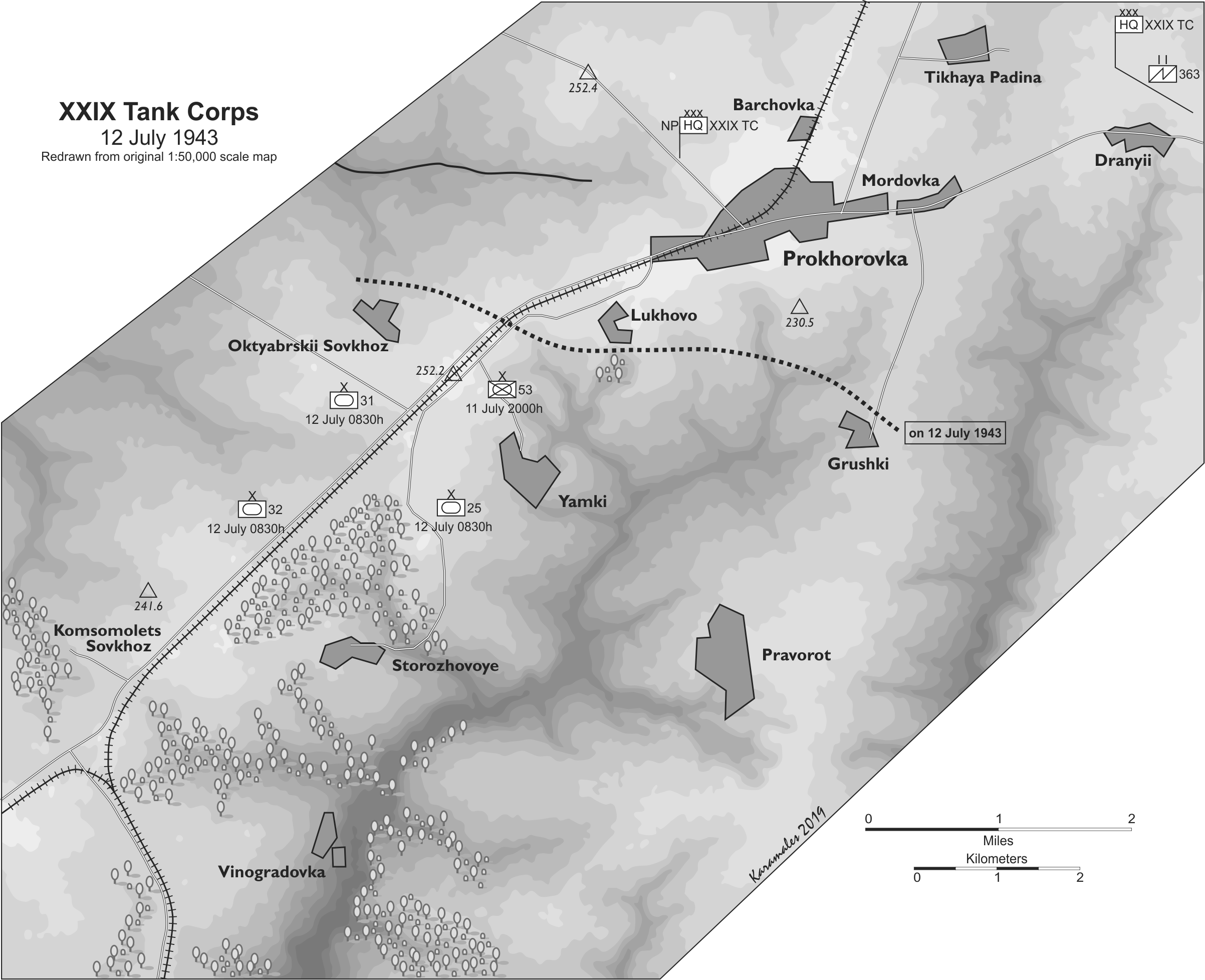
Now, most accounts assume that the advancing Soviet 32nd Tank Brigade encountered the tank ditch in the morning. This is definitely the impression given by Ribbentrop’s account (6th panzer company/II Panzer Battalion). Some people add the Soviet 31st Tank Brigade to this mix. Zamulin has a different story. He states (page 327) that:
At 1300….[Soviet units] broke into the Oktiabr’skii State Farm. Having finally overrun the first line of antitank defense on Hill 252.2, a group of 29th Tank Corps tanks poured down the hill’s southwestern slopes in pursuit of the retreating enemy in the direction of the Komsomolets State Farm. But after several hundred meters of the chase, something happened which shocked their crews. Several T-34s, moving in the lead at high speed, suddenly vanishing into the deep anti-tank ditch.
Zamulin does not give a source for this claim. He then describes the tank ditch and then quotes the Wilhelm Roes account (from 7th panzer company/II Panzer Battalion). Is this a second encounter with the tank ditch, different than the one in the morning mentioned by Ribbentrop; or was the tank ditch only encountered in the afternoon; or was it run into twice; or have the accounts simply gotten garbled?
This is a very different construct, as it would have the attack being held up at Oktyabrskii Sovkhoz long before the attackers got to the tank ditch. It turns the tank ditch into a minor part of the story, as opposed to being one of reasons that the 32nd Tank Brigade was halted.
I did not include Zamulin’s version of the tank ditch story in my book as I did not have confidence in its validity. It did not help that he did not footnote it.
